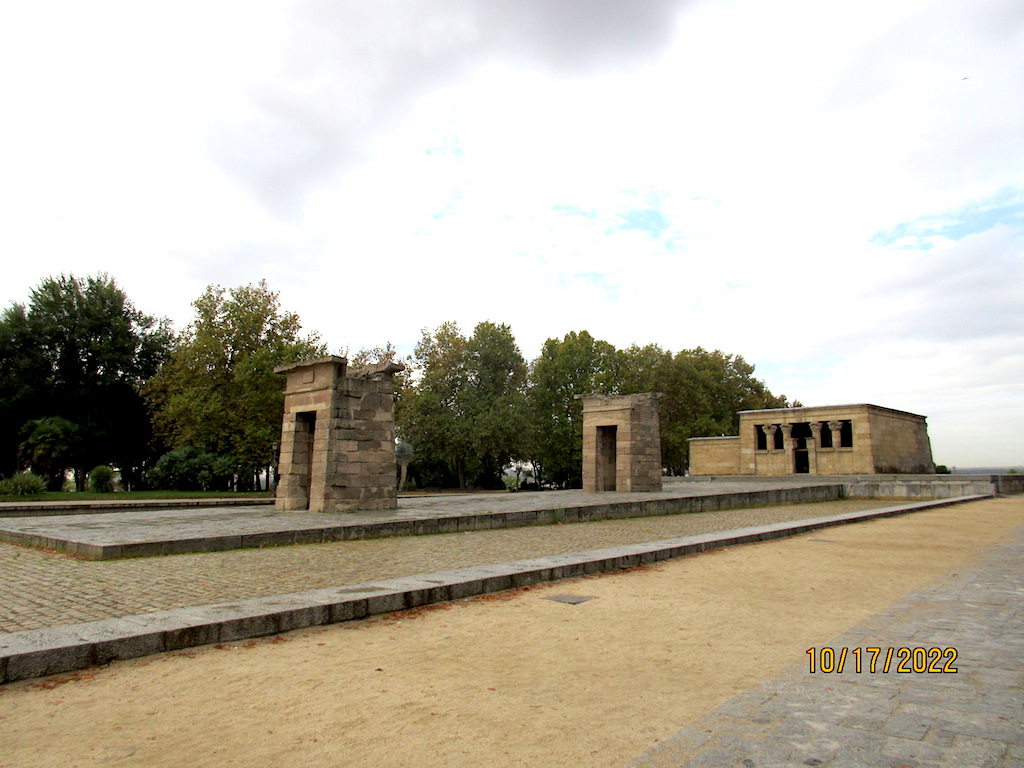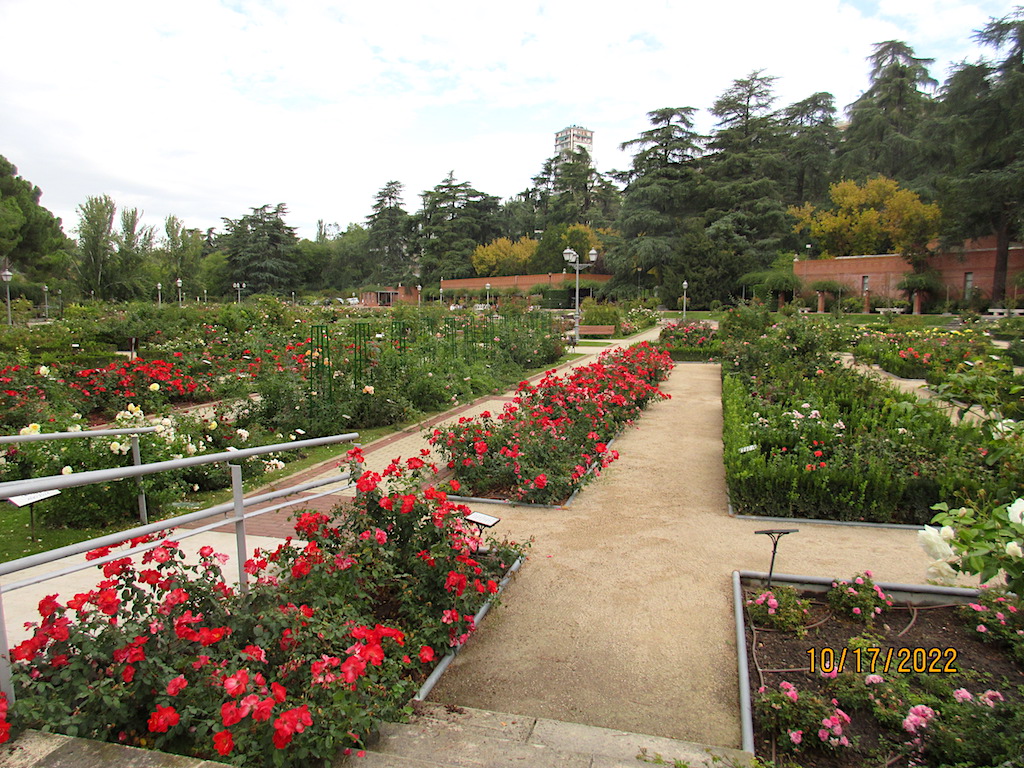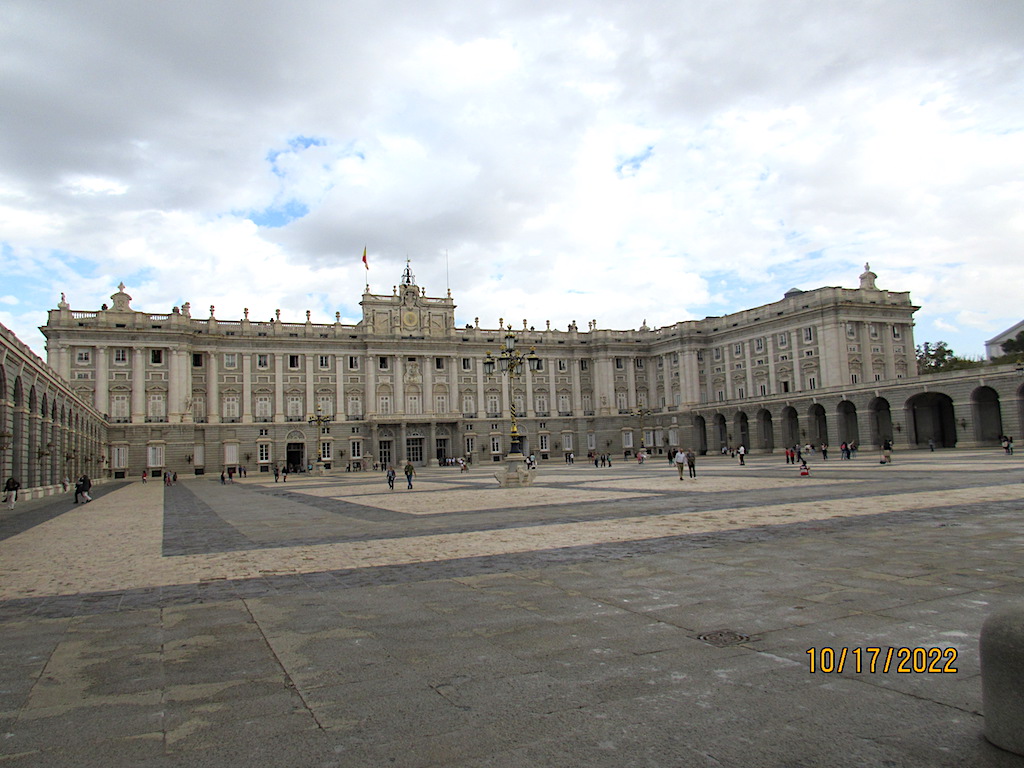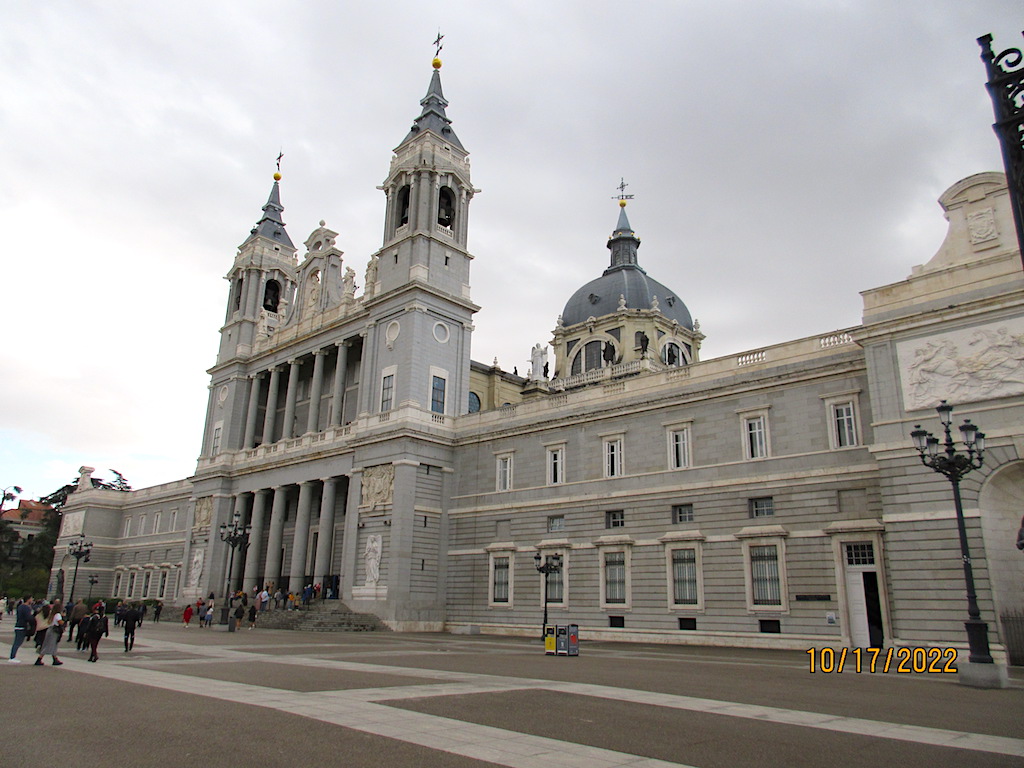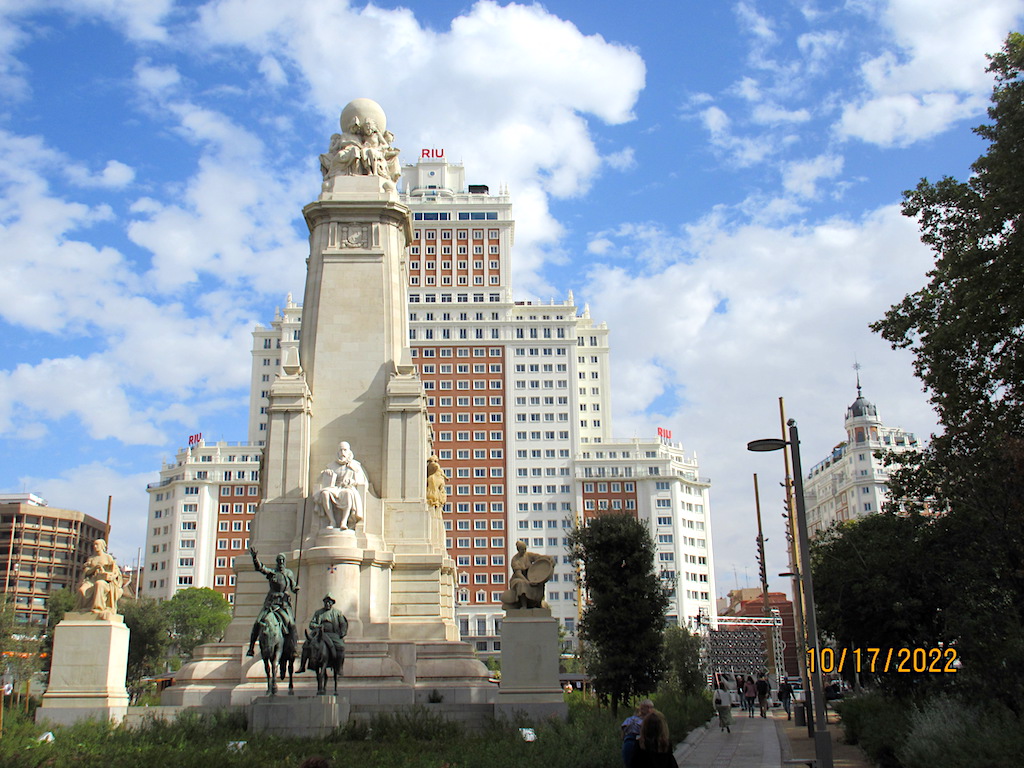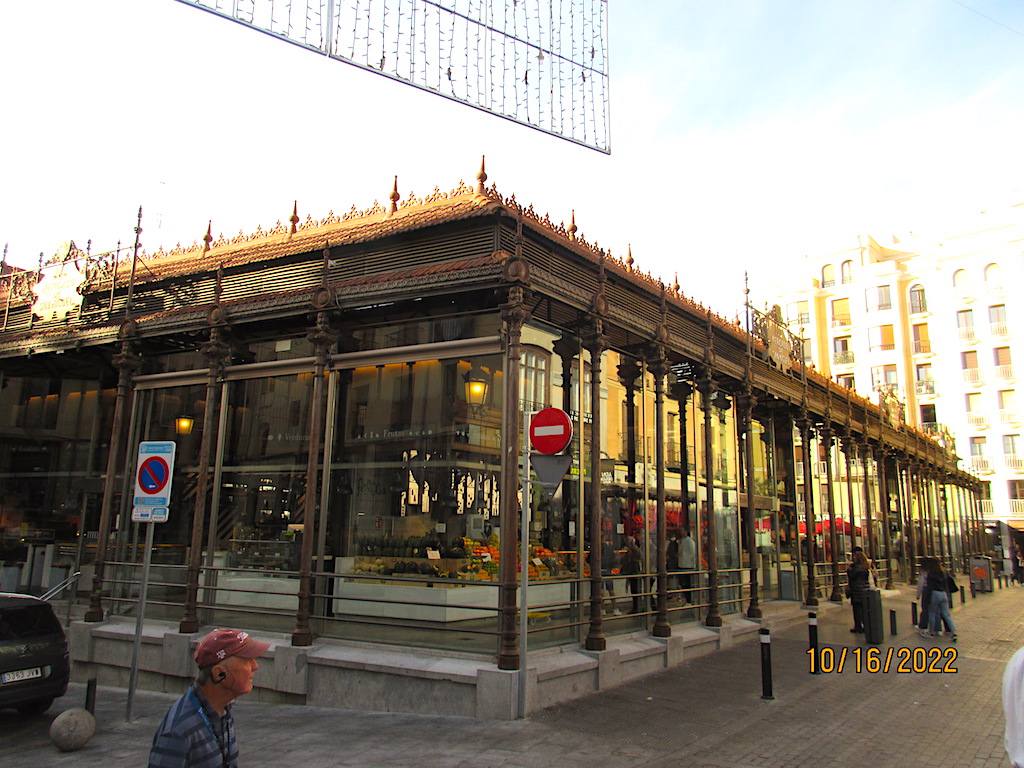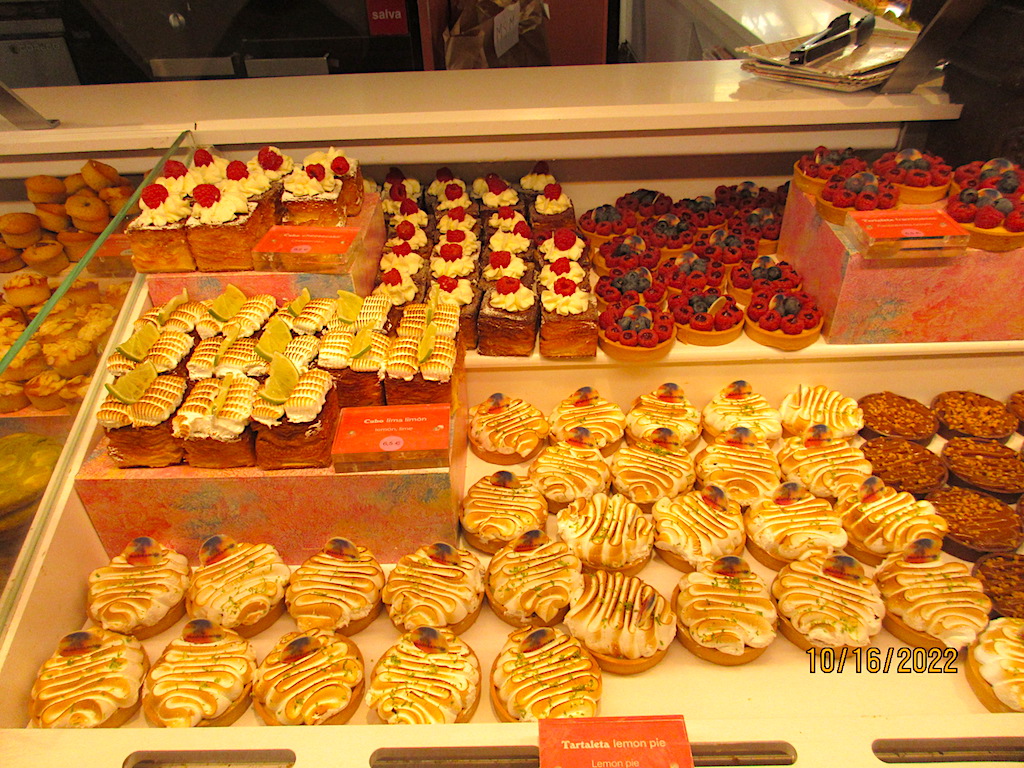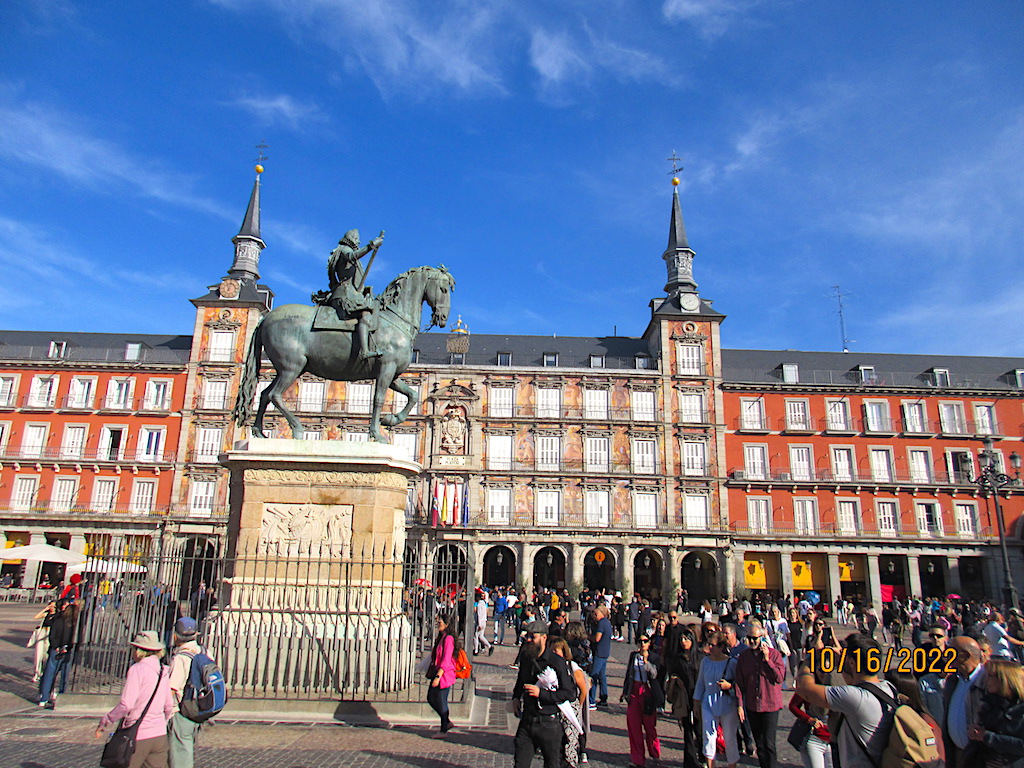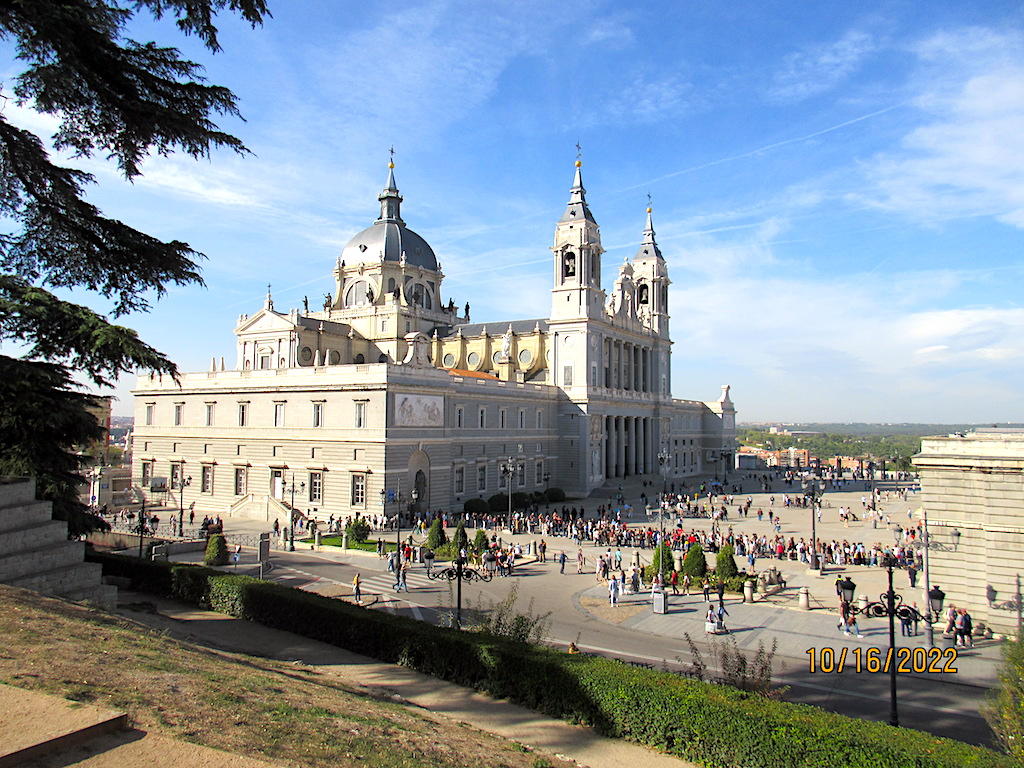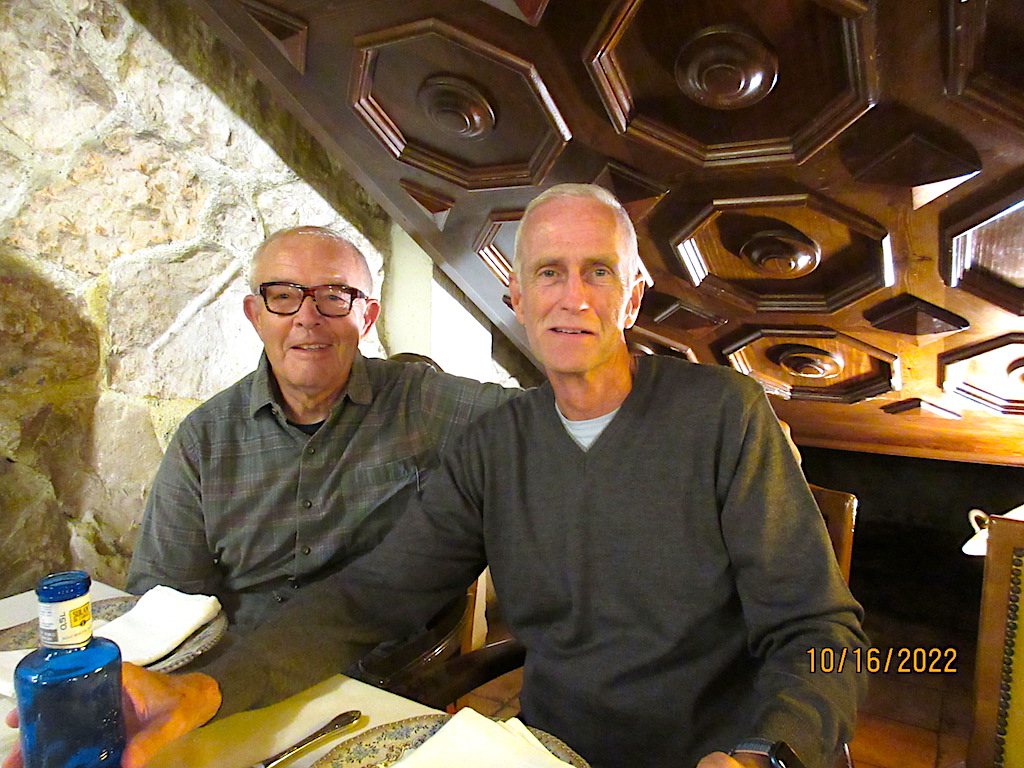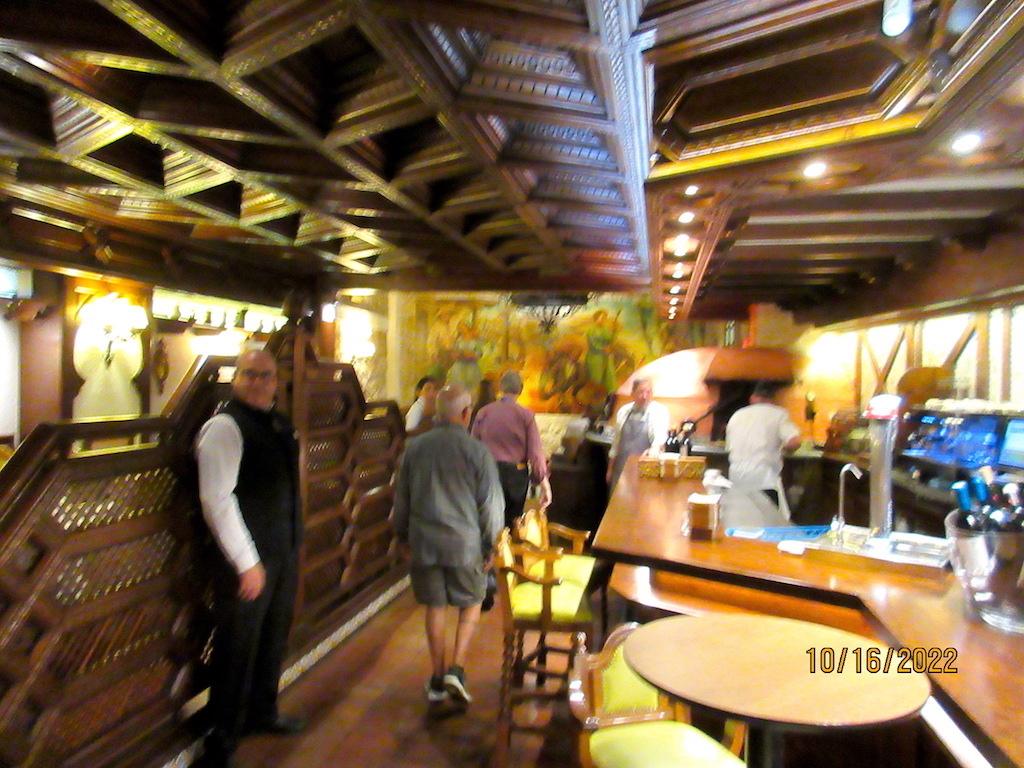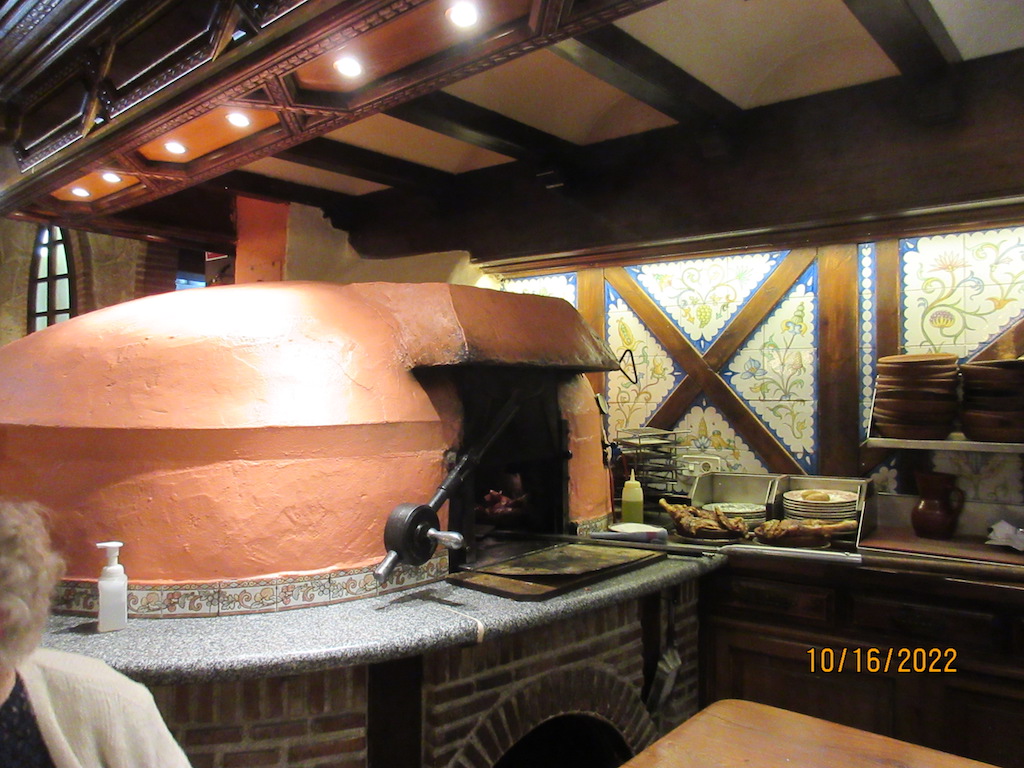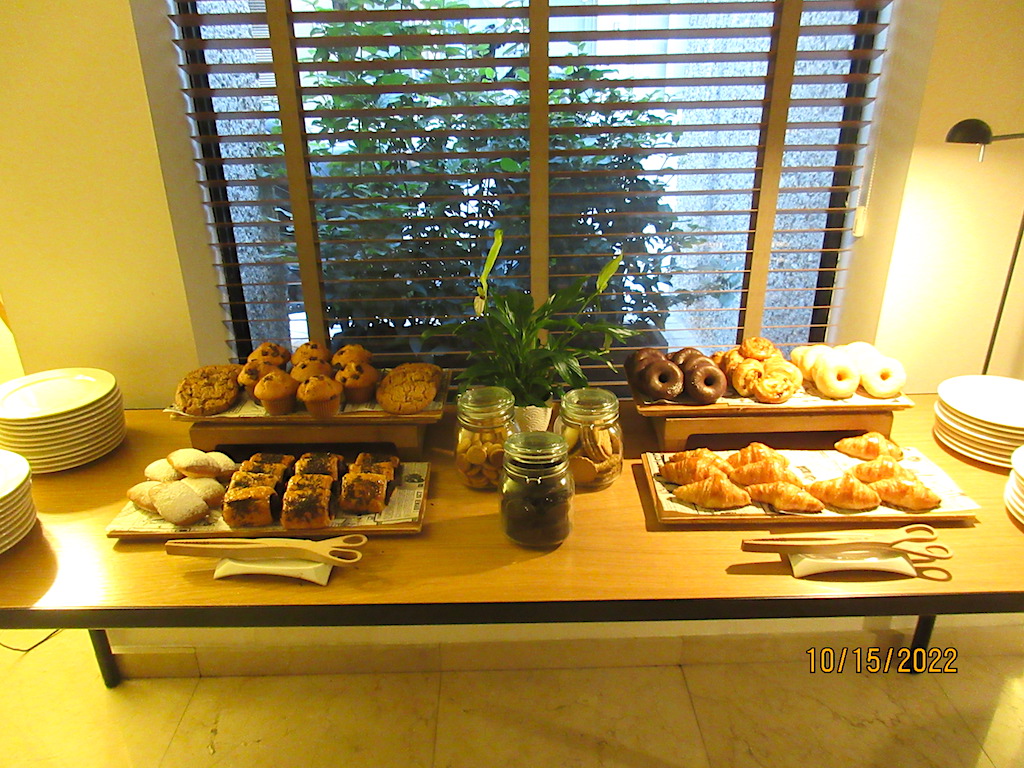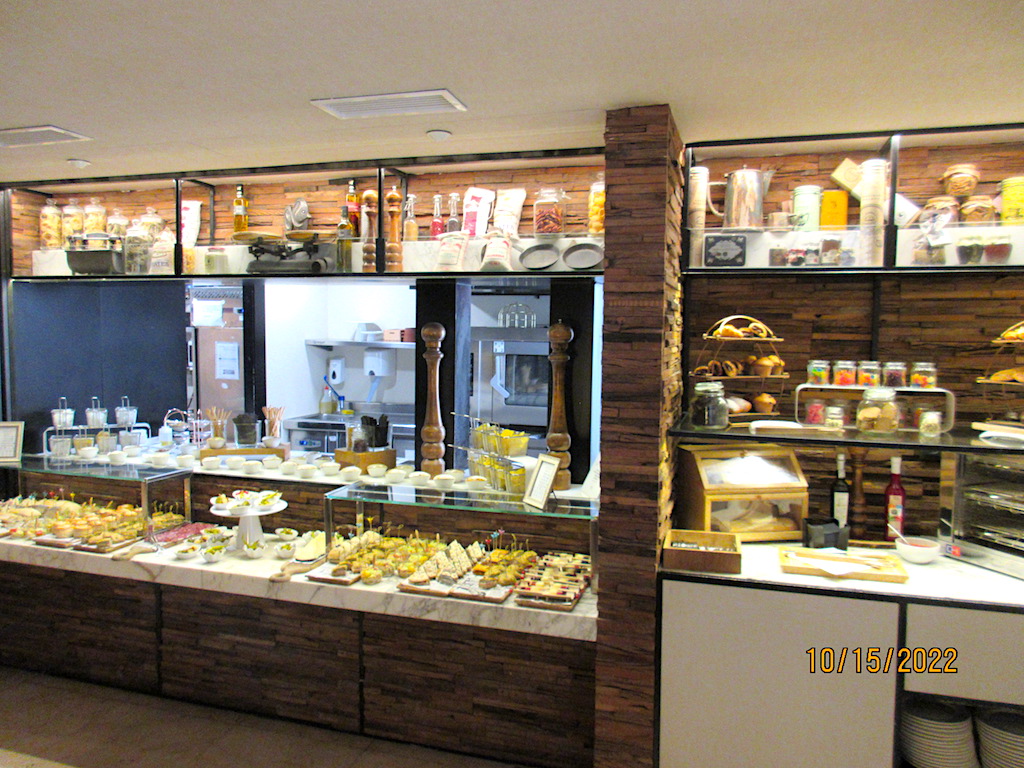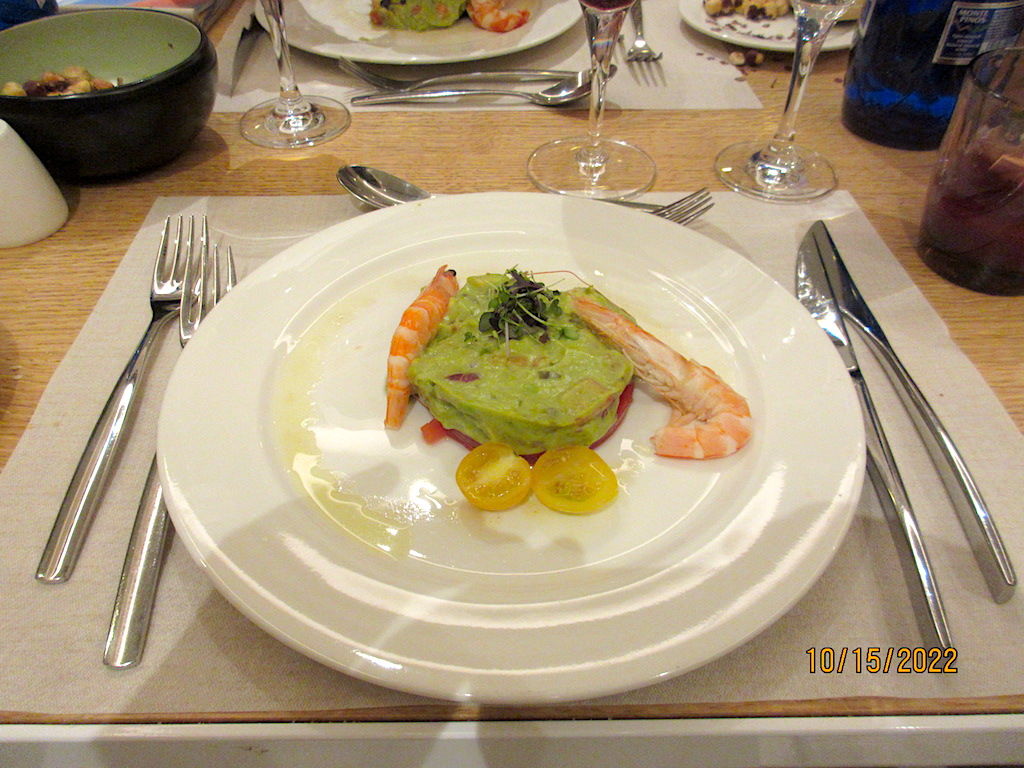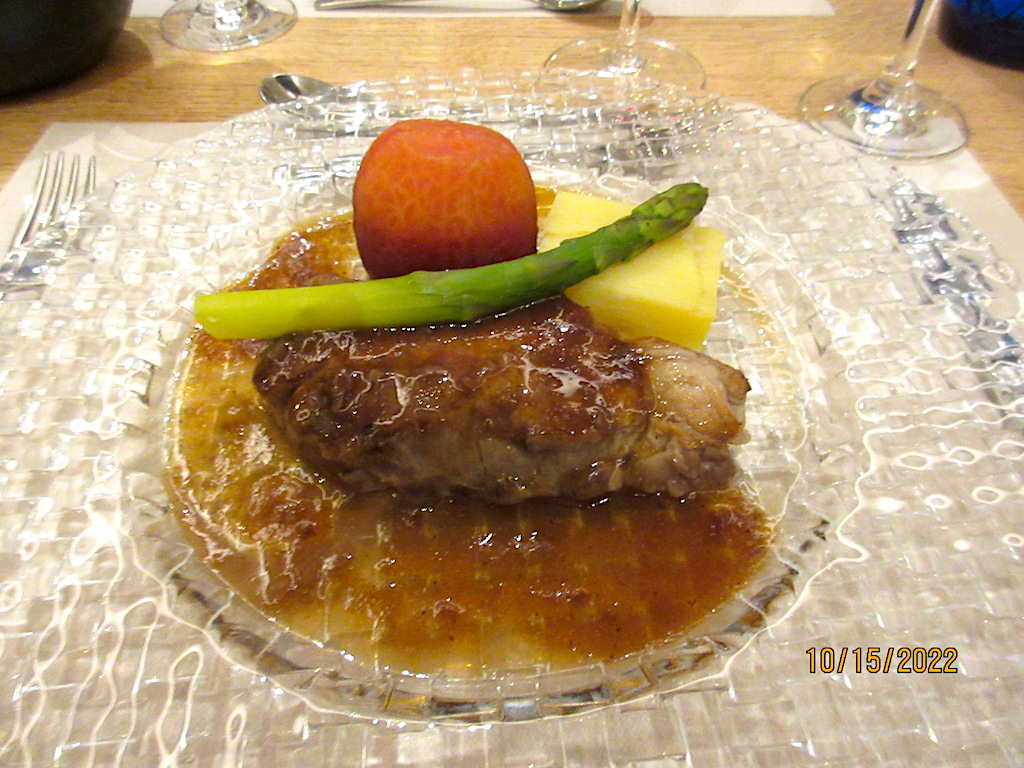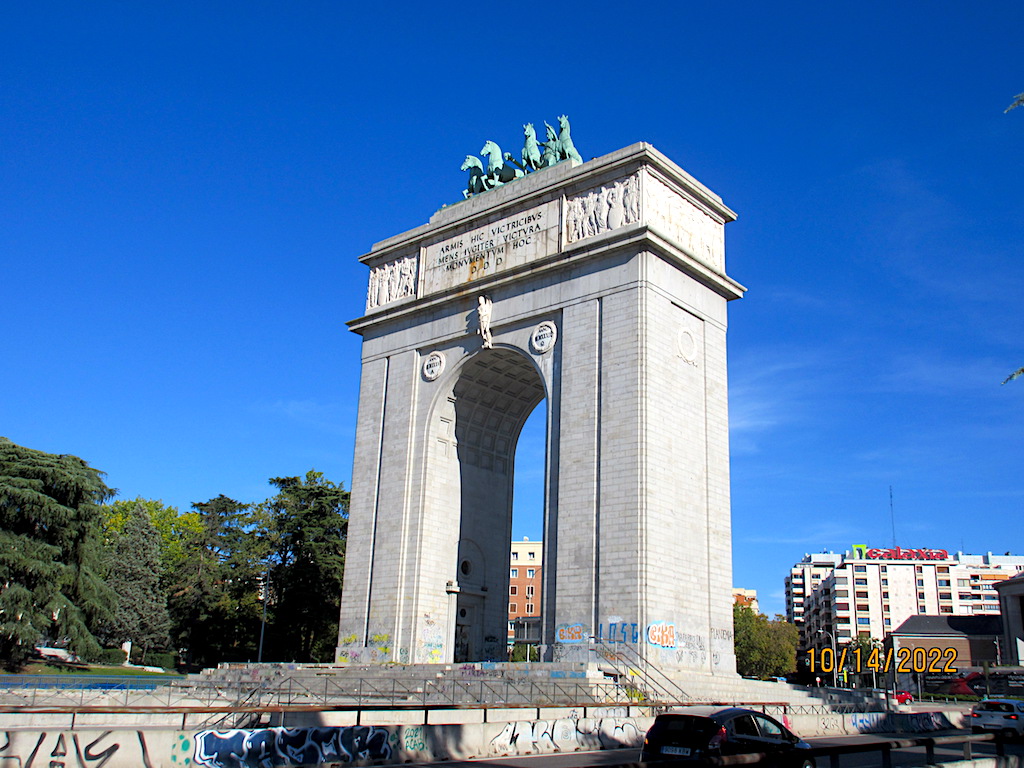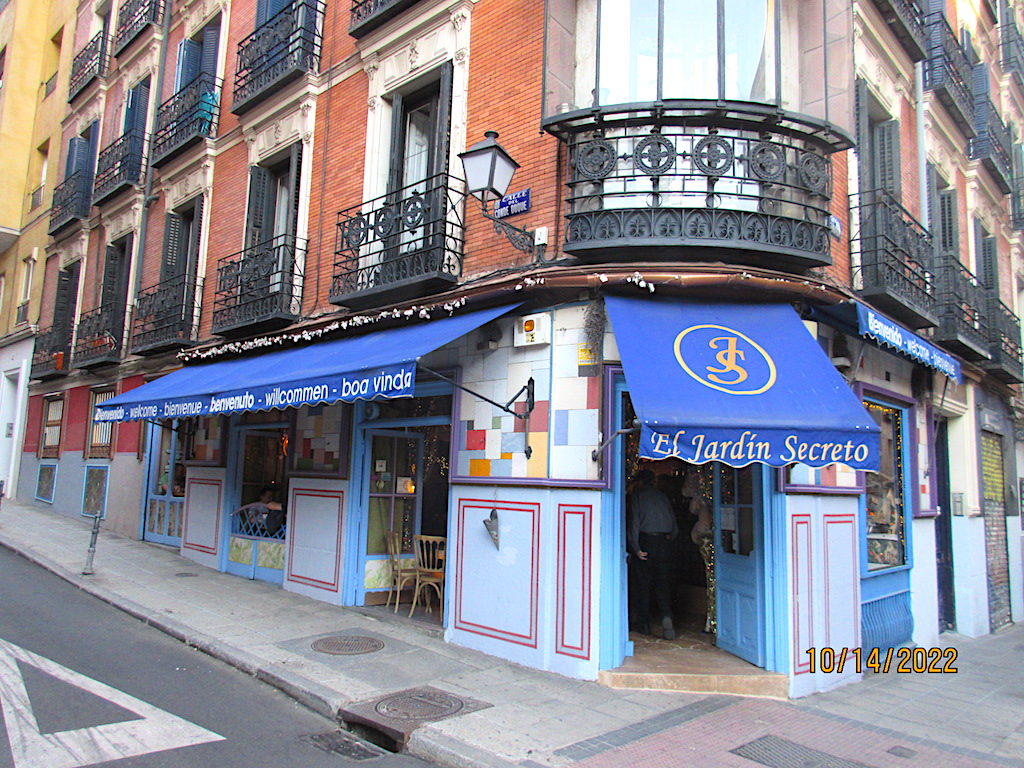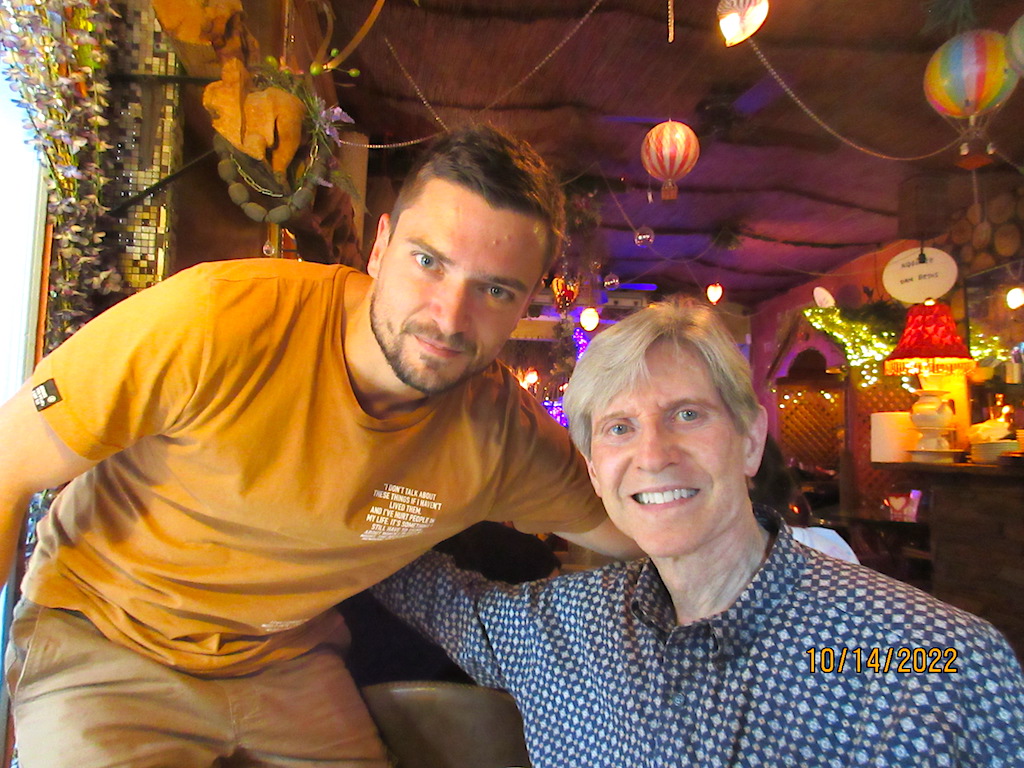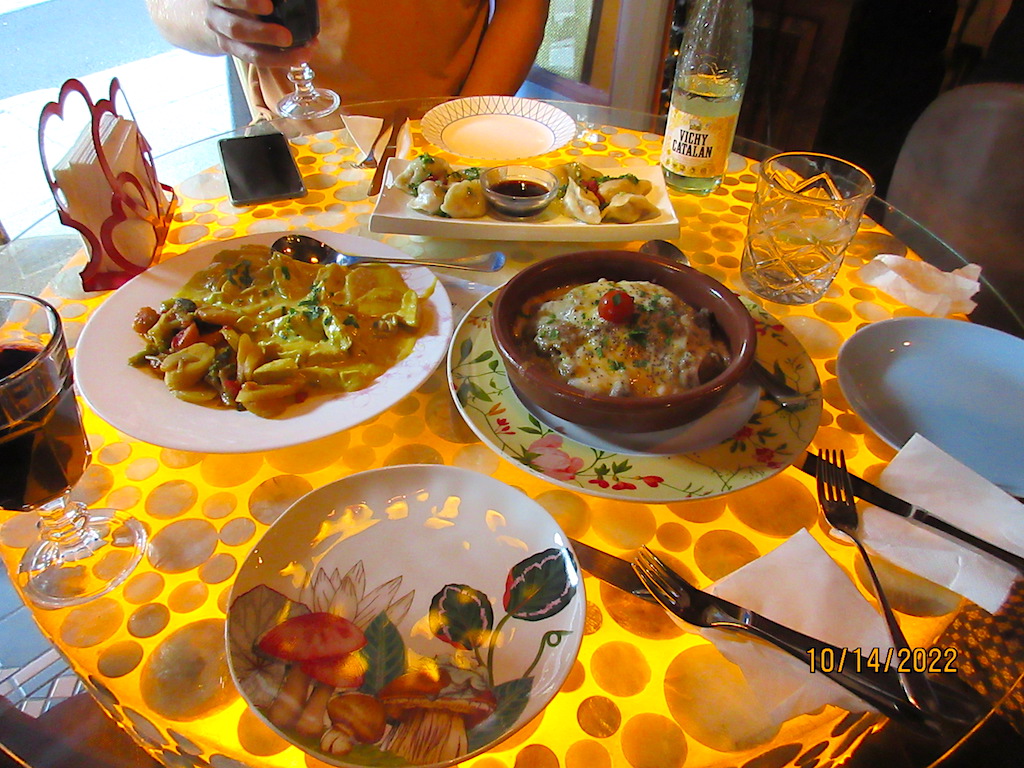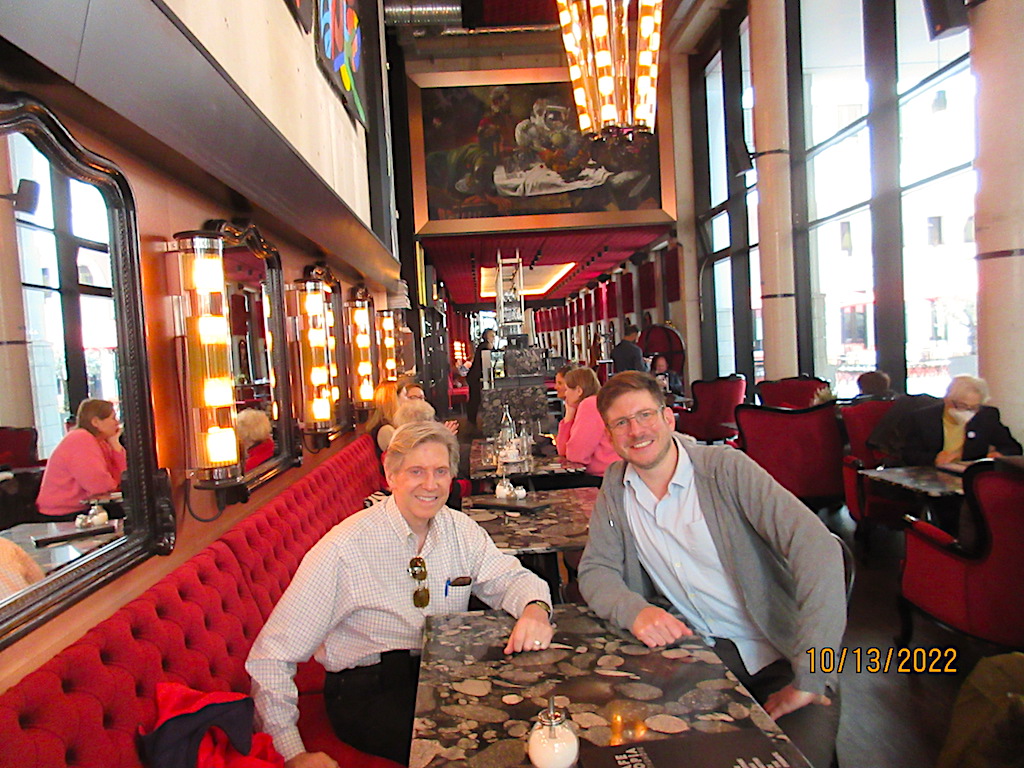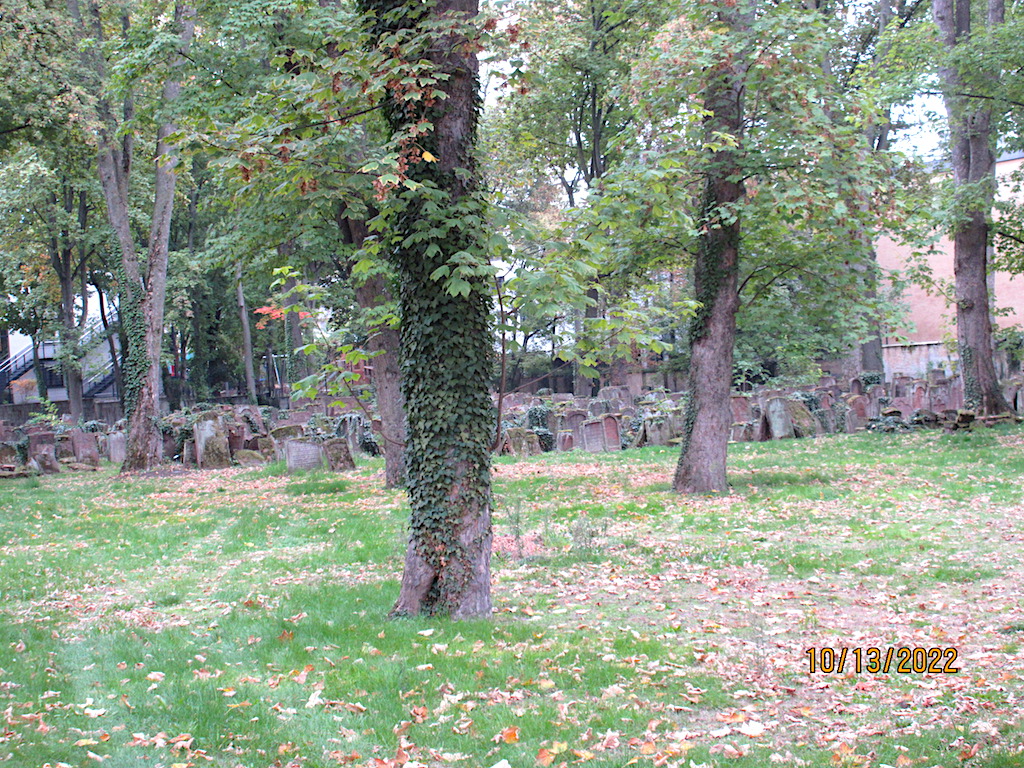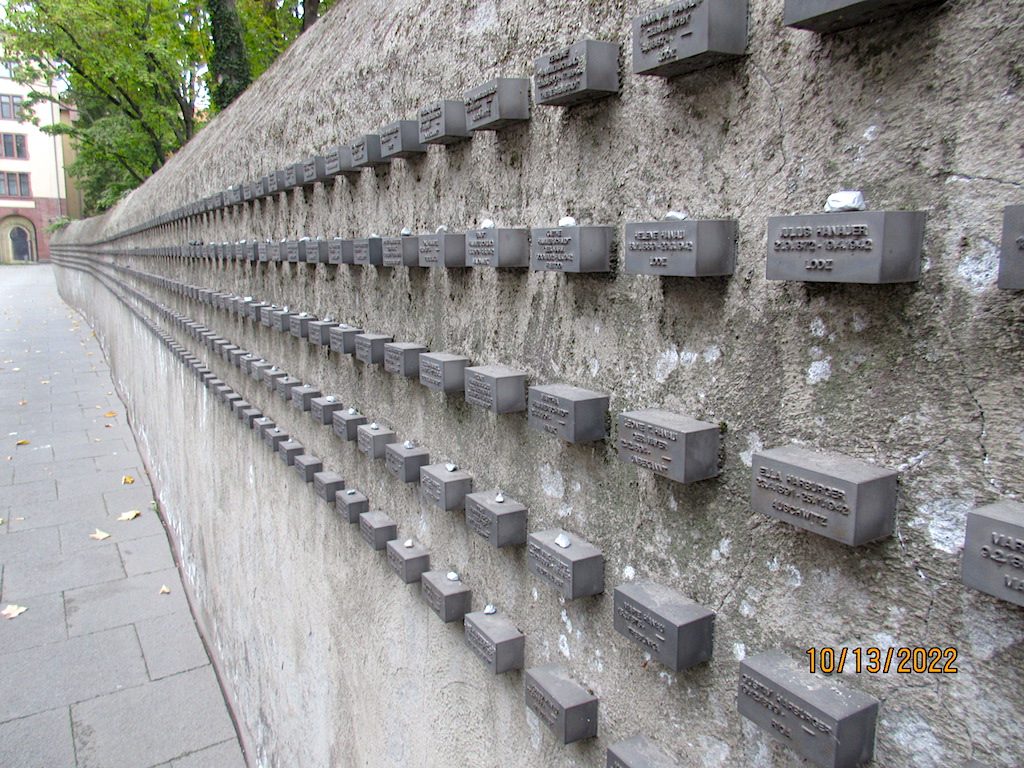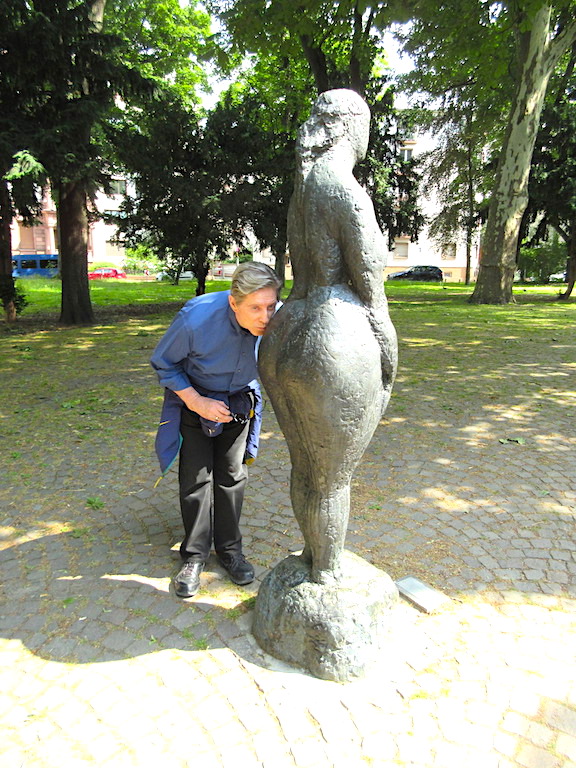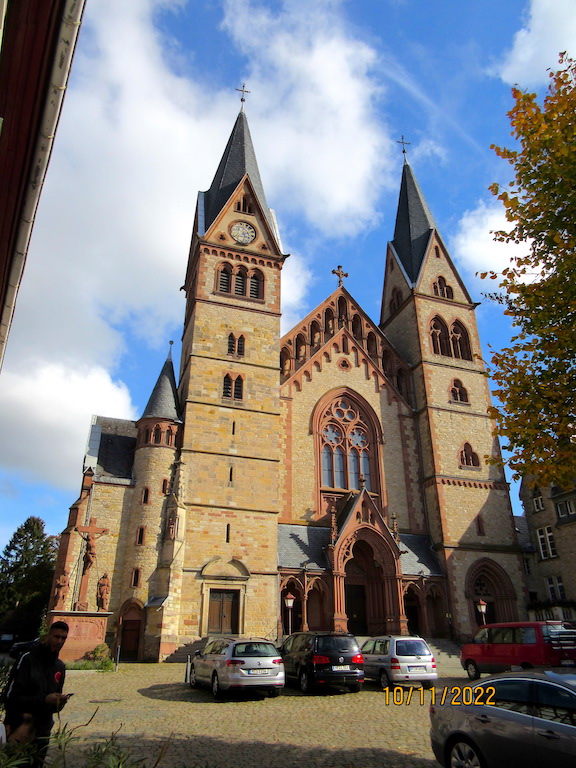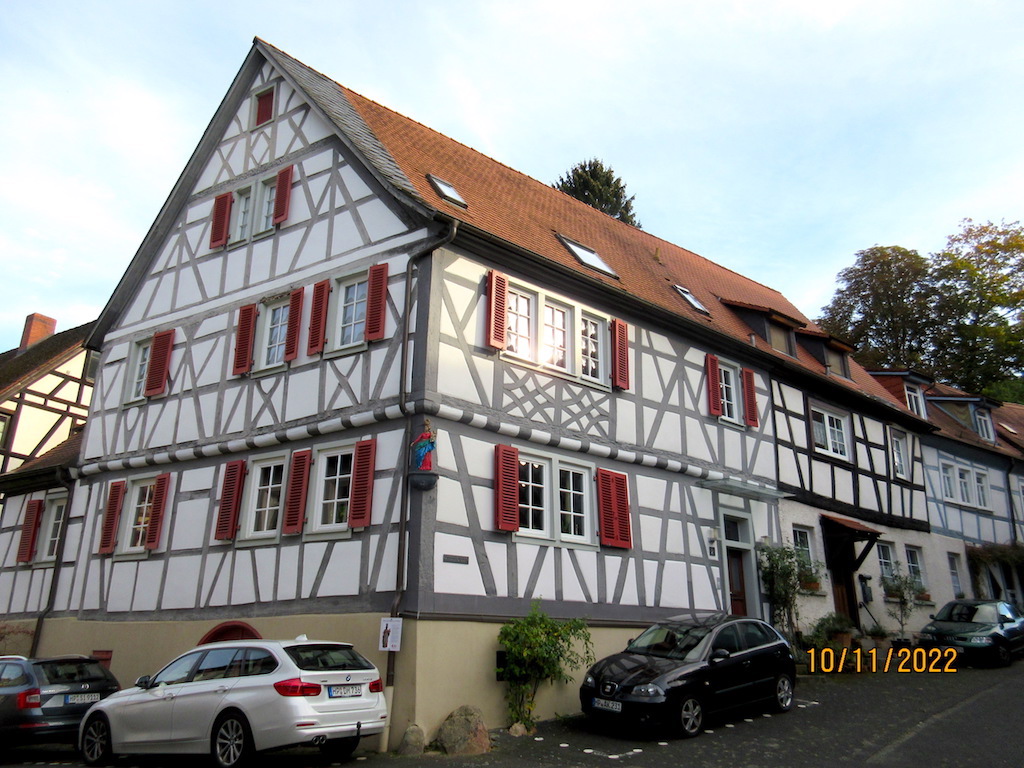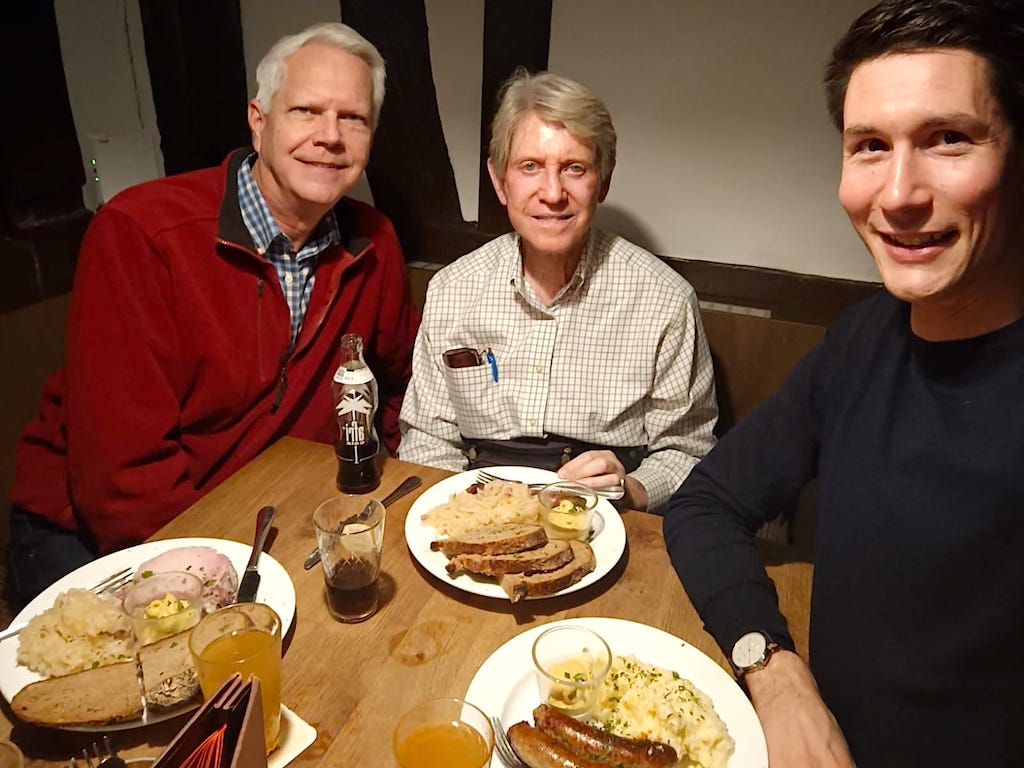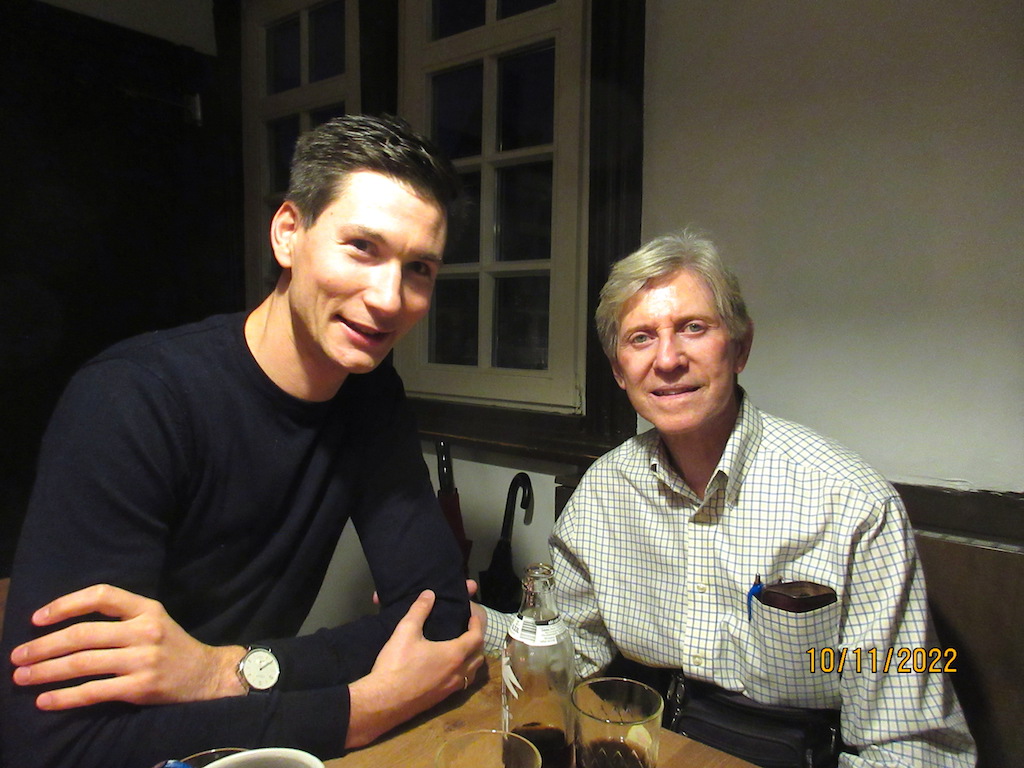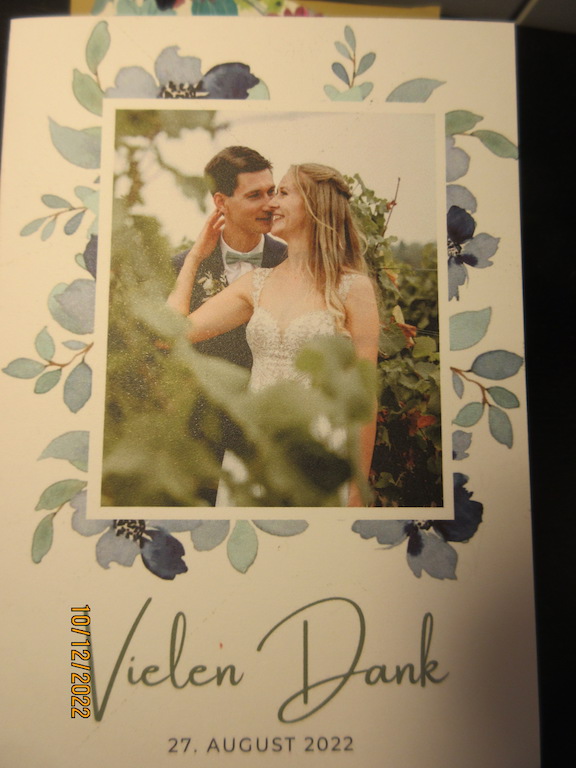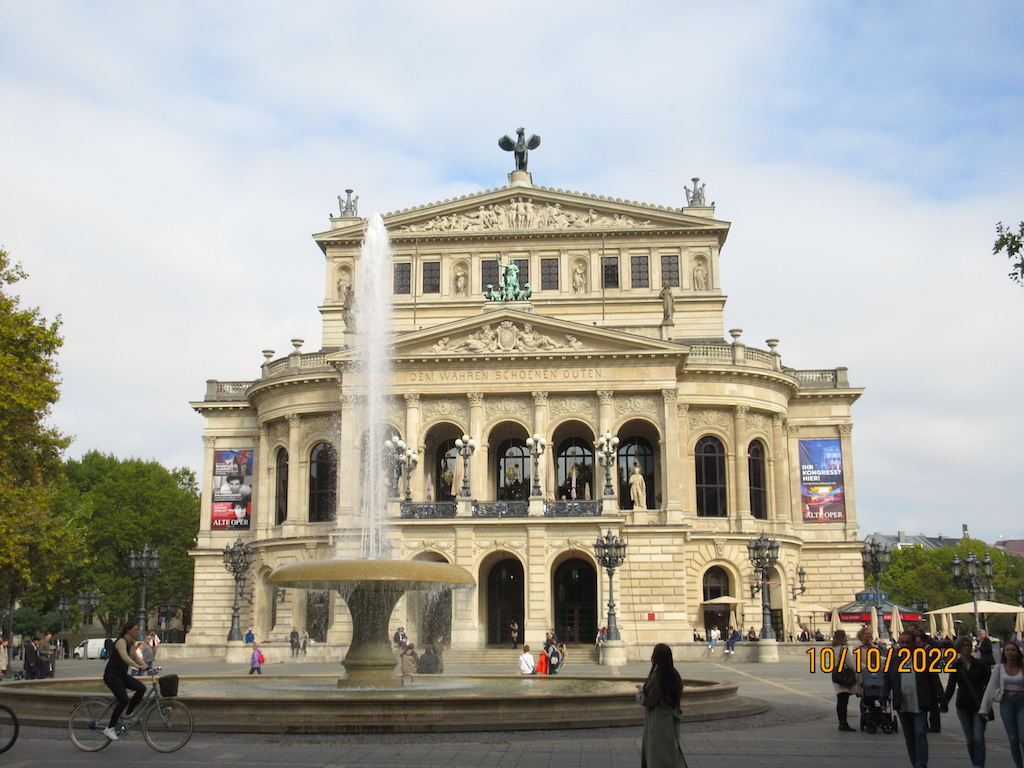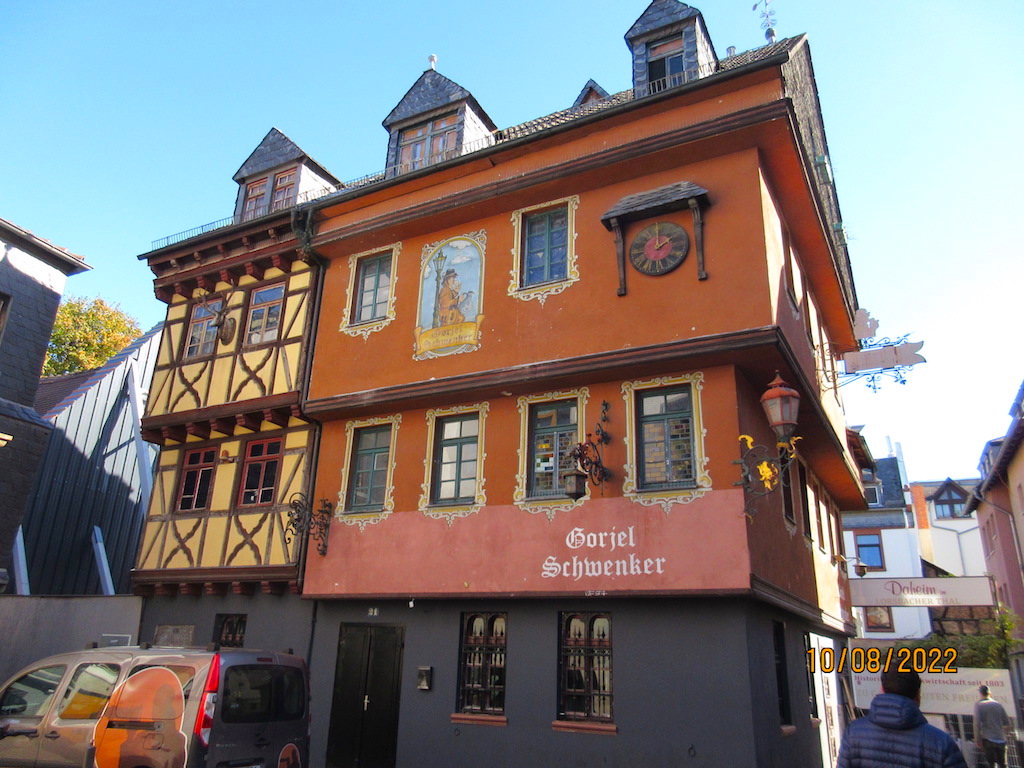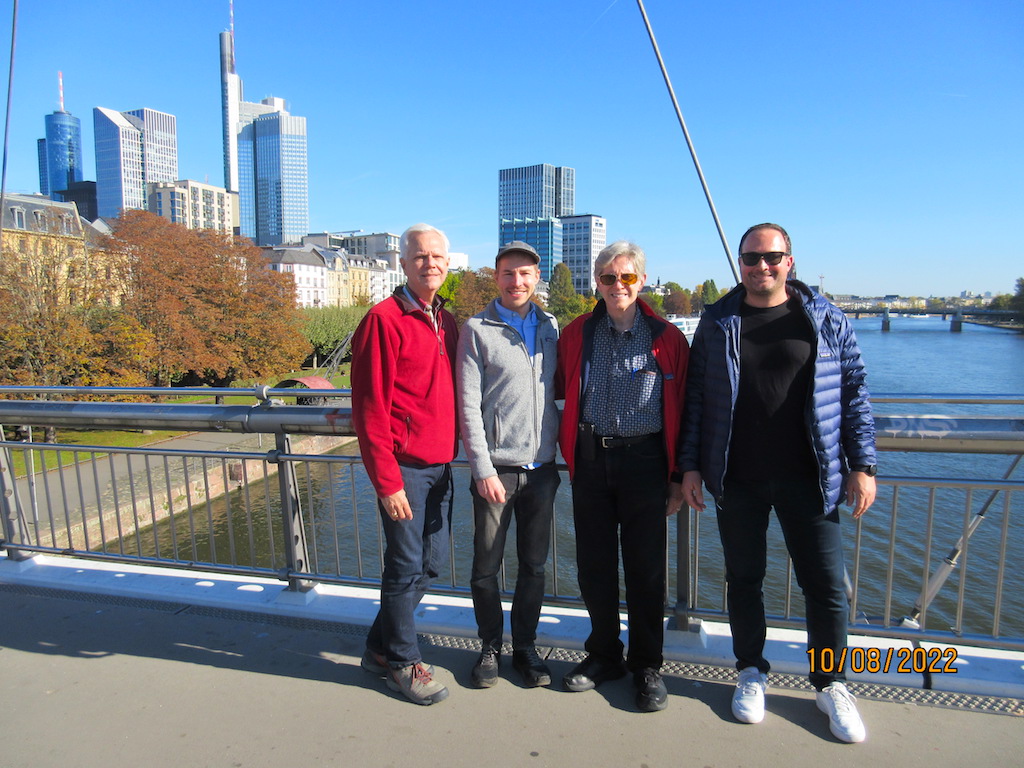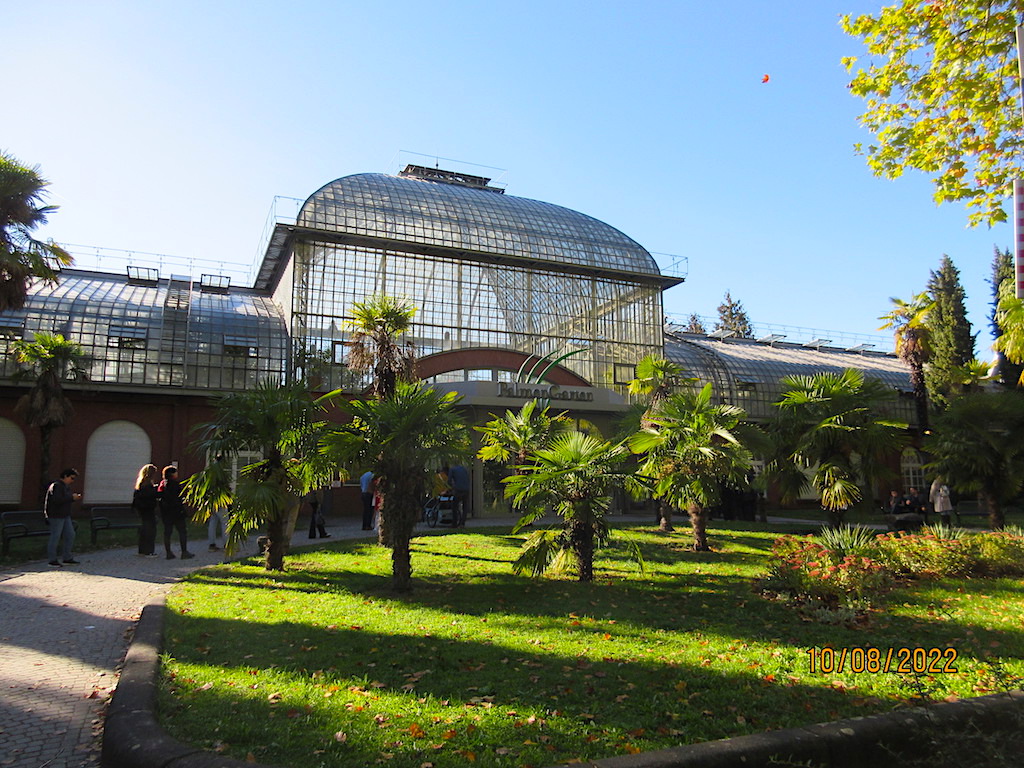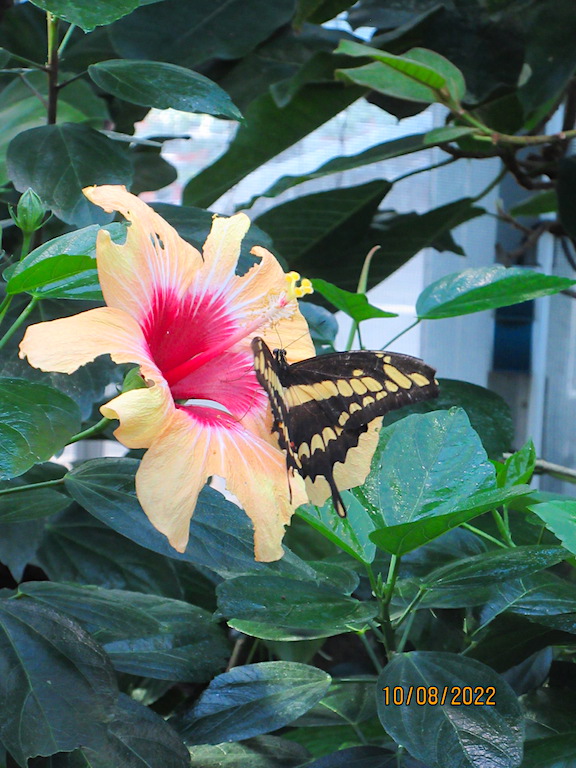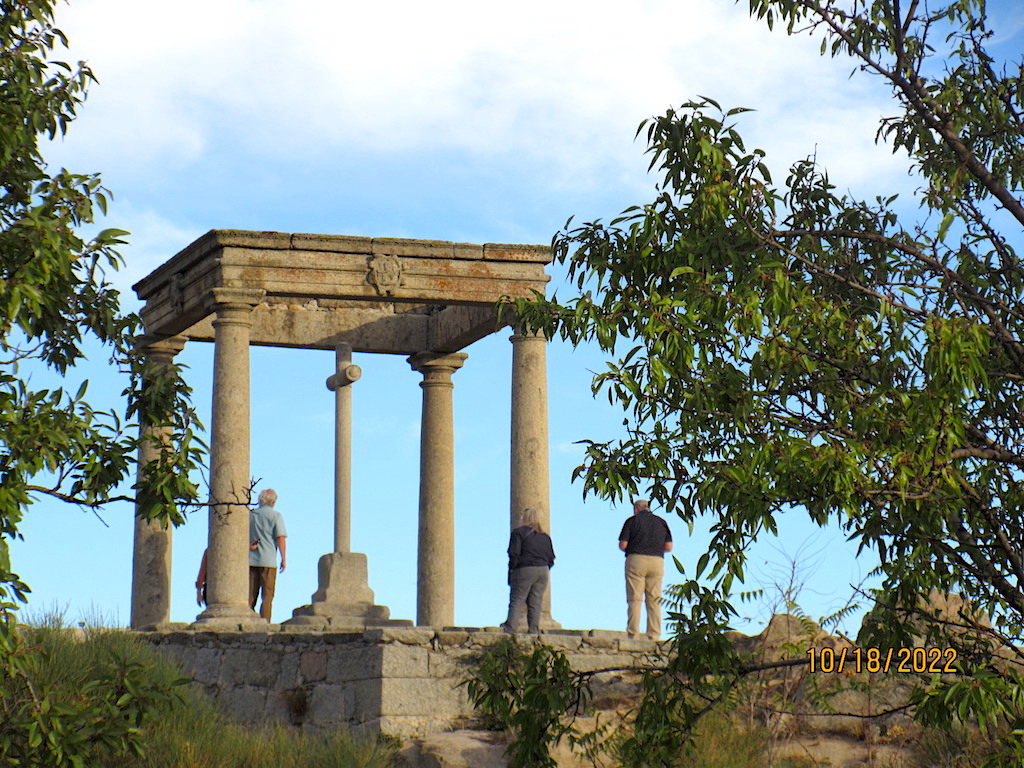
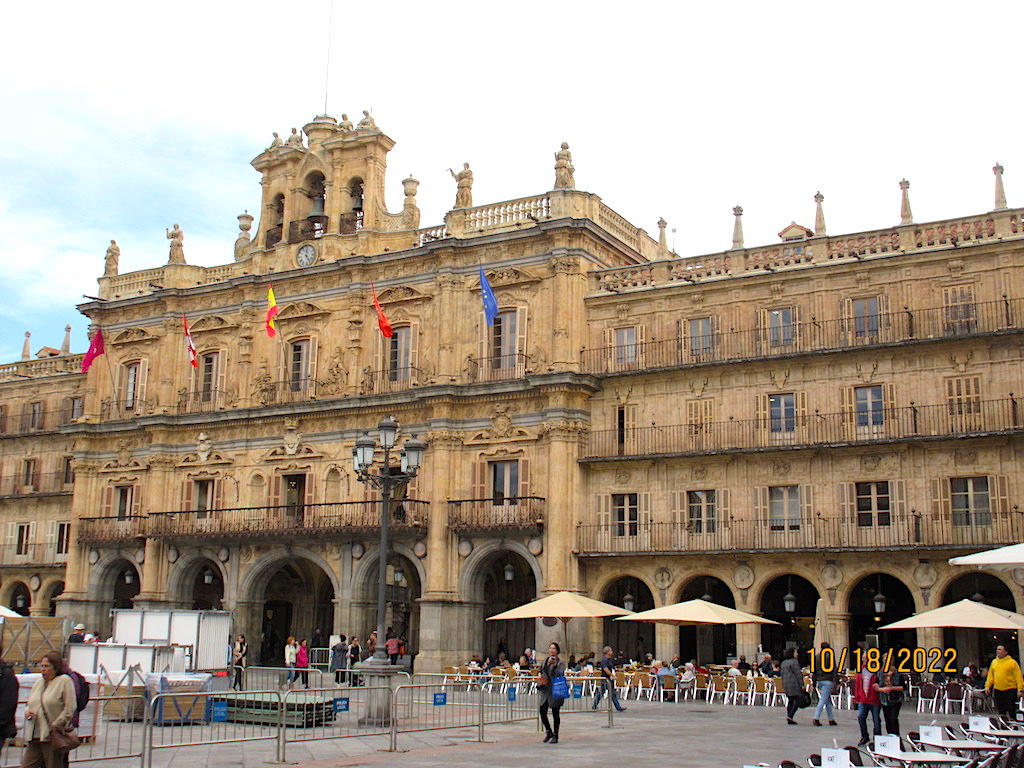
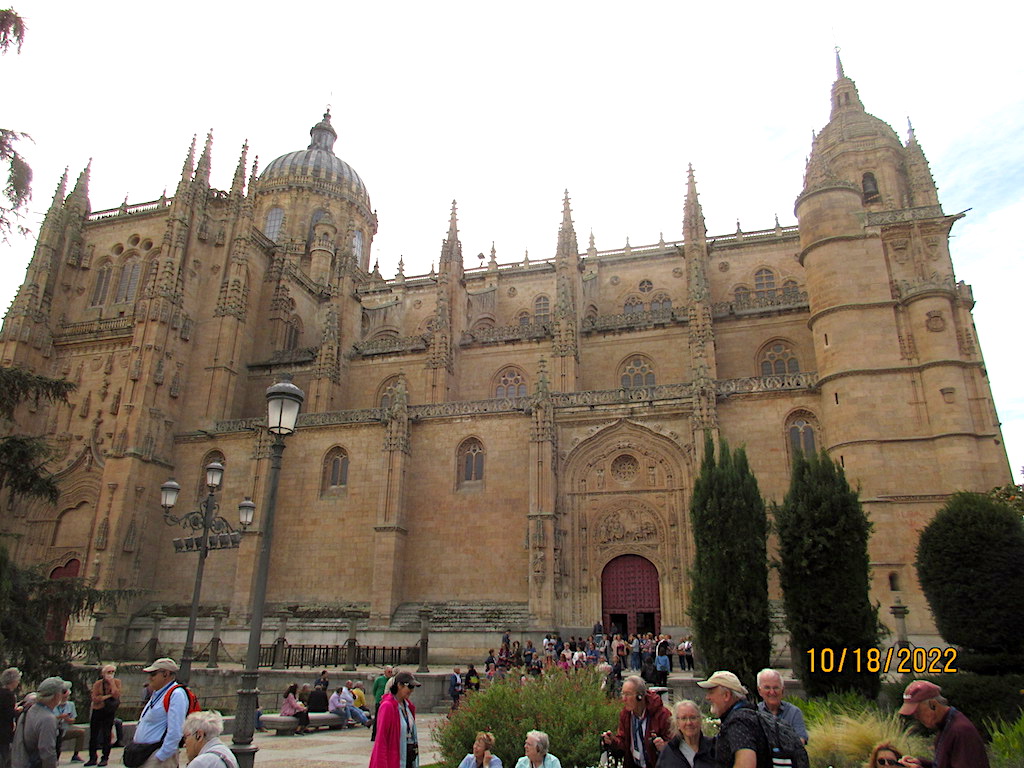
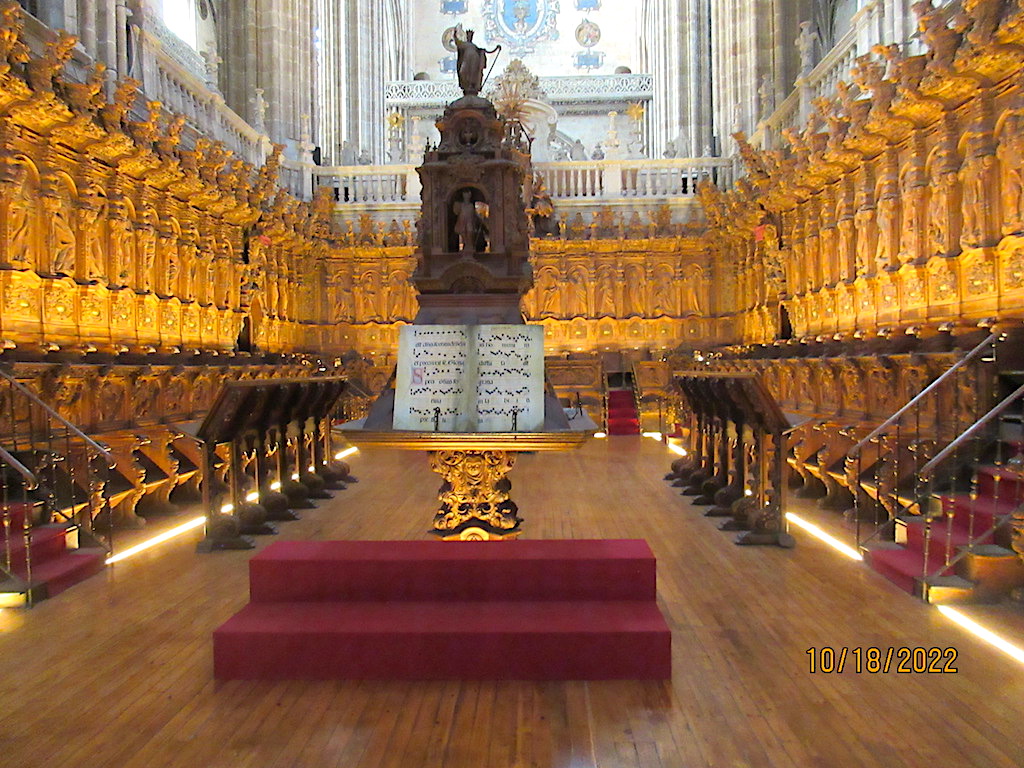
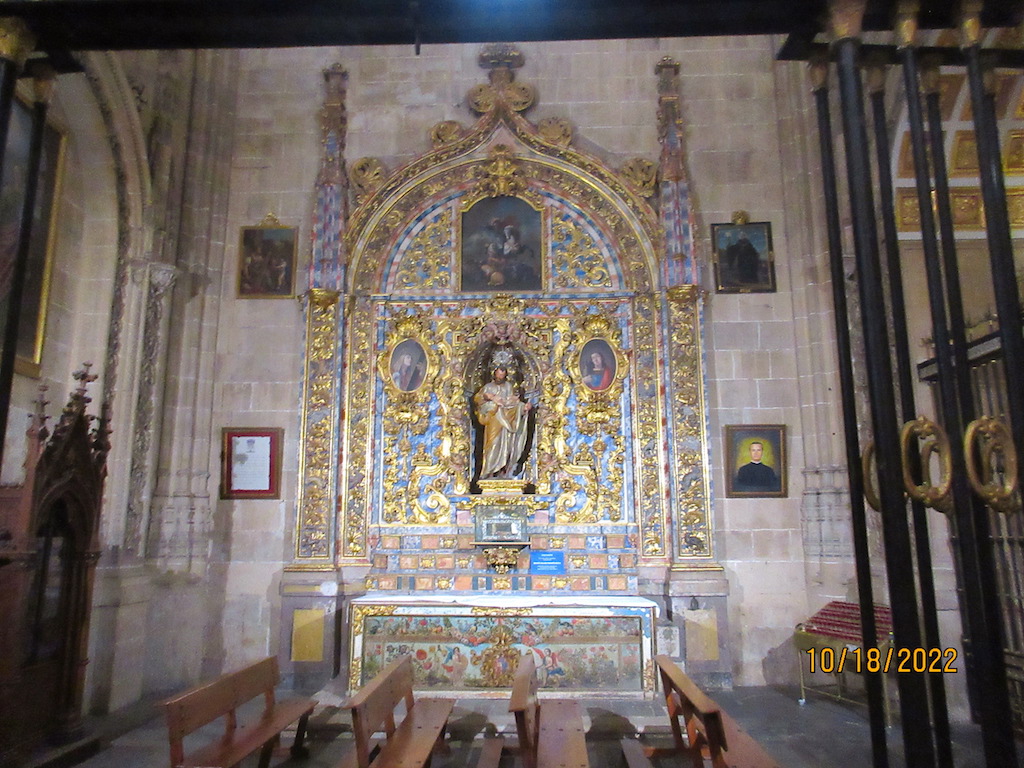
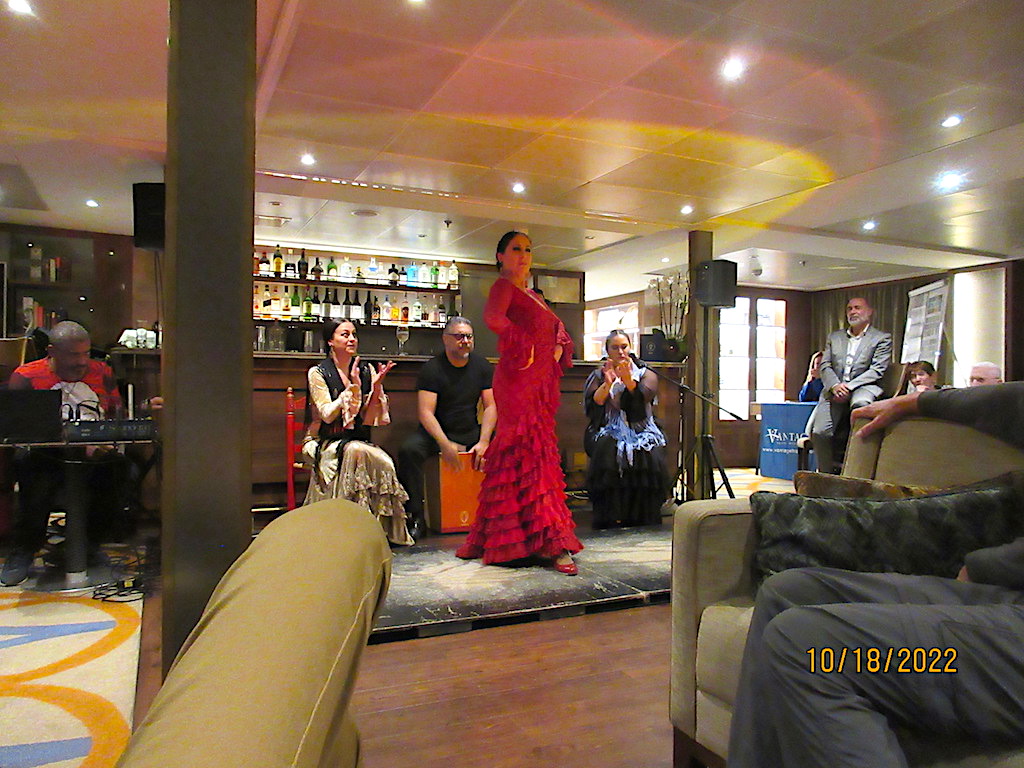
First thing this morning Kent was getting on the coach and had an accident. As he was boarding the coach with his carry-on bag, he slipped and fell backwards out of the coach door landing on the concrete on his back and hitting the back of his head. A doctor and nurse traveling with us checked on him and we got ice from the hotel for him to reduce the swelling. He decided to continue on the trip without going to the hospital. By the end of the day he was feeling sore but felt certain that he had not broken anything.
We traveled by motor coach about three hours to the city of Salamanca which is about 120 miles west of Madrid, with a population of about 150,000 inhabitants. Along the way we stopped in a small town called Avila where had a comfort stop. The town sits on the Adaja River where there is a small four posted shrine with a cross in it built in 1566 on the site of a former Roman Temple. Many believe that it is where seven-year-old Saint Teresa tried to run away to seek martyrdom in the battle with the Moors. Her Uncle, Francisco, stopped her and made her return to the city as the story goes.
In Salamanca we took a walking tour of the UNESCO listed historic old city and its gorgeous Grand Cathedral. The cathedral of Salamanca is a combination of both an old cathedral dating back to the 12th and 13th centuries, as well as a newer cathedral built in the 16th century. The old cathedral was built in the Romanesque style with an incredible Gallo Tower in the shape of a lantern with faceted sides rather than a traditional dome. The cathedral is filled with ornate murals and its tomb of the bishops’ is filled with members of nobility.
The old town’s cobblestone streets and pedestrian only streets make it an easy town to navigate on foot. The traditional buildings with wrought iron railings and glass enclosed verandas were inviting. The Plaza Mayor is filled with cafes where you can sit and visit with friends or just watch the people go by. Kent spent most of the afternoon on the main square watching the people go by while Mark went on the walking tour.
After some time to explore Salamanca and have a bite of lunch we drove about two hours to a small village located in a gorgeous valley called Barca D’Alva in Portugal near the border with Spain. The village is located in a quiet rural area of rolling hills covered with grapevines, almond orchards and olive trees. The village is known for its wine making as well as being a gateway to riverboats on the Douro River.
Here we boarded our river boat called the Douro Serenity which we would call home for the next week. The riverboat was built in 2017 and can accommodate up to 126 guests. Like most riverboats it is long and low with three decks including a restaurant, bar/lounge and a roof top pool deck. The cabins are small but nicely appointed with everything you might need including a private bath with shower.
After settling into our cabin, we had a welcome drink and briefing in the lounge before enjoying a delicious dinner onboard. After dinner a local Spanish Flamenco Show provided the evening’s entertainment. There were three Flamenco dancers who were excellent and one of them sang the songs with her beautiful voice. Not sure that we have ever seen a Flamenco show in person so it was very high energy and interesting.

